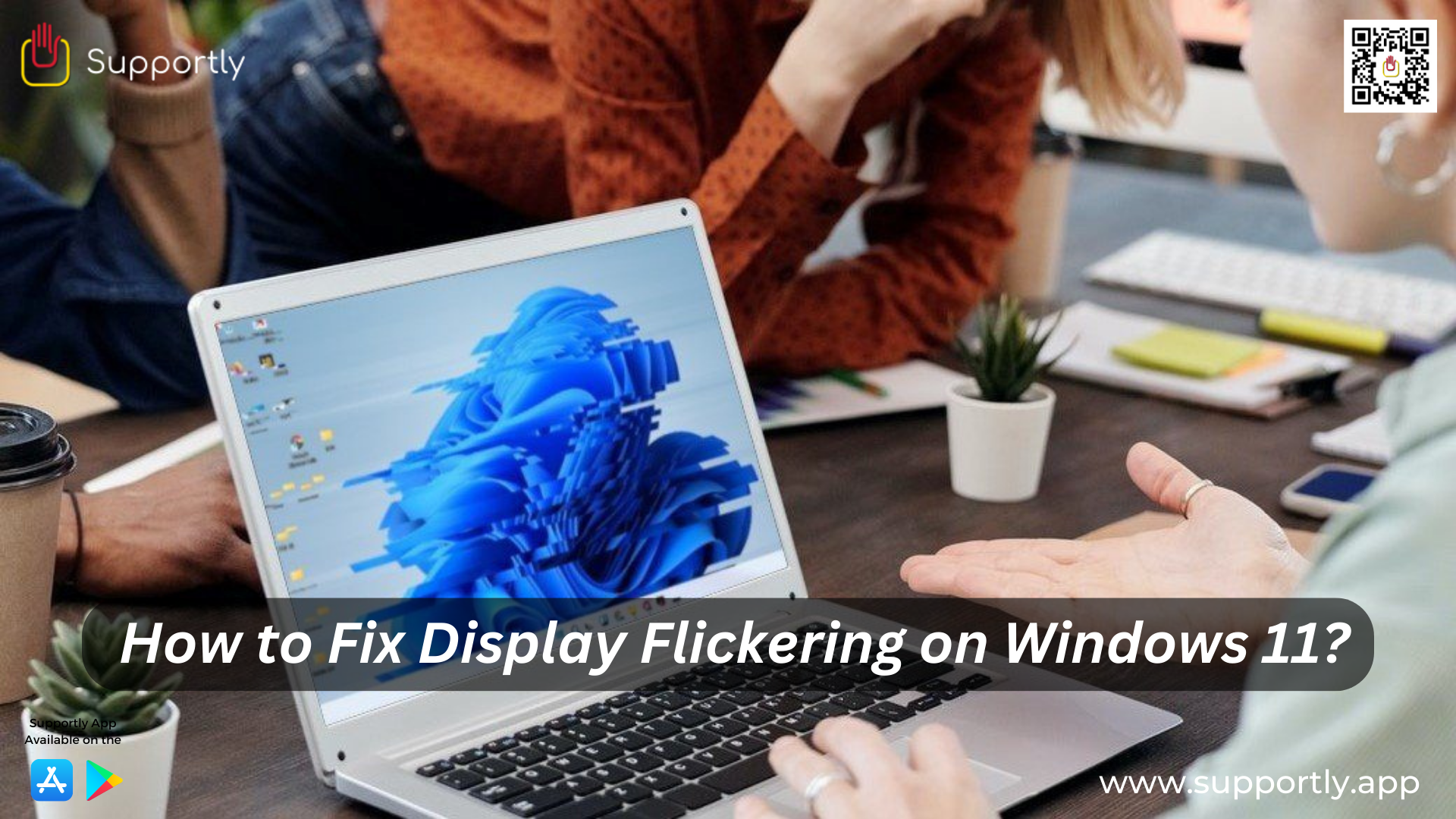Forgot Windows Login Password? Here’s How to Reset It Easily

Get Instant Solution to Fix Display Flickering on Windows 11

Windows 11 is the latest operating system by Microsoft, bringing with it a fresh interface and enhanced features. However, some users have reported experiencing display flickering issues after upgrading to Windows 11. Display flickering can be an annoying problem that disrupts productivity and strains the eyes.
If you're experiencing display flickering on Windows, you can try the following steps to fix the issue:
In this article, we will explore various troubleshooting steps to help you fix display flickering on Windows 11 and regain a smooth and stable visual experience.
Outdated or incompatible graphics drivers are a common cause of display flickering. To resolve this, visit the manufacturer's website for your graphics card and download the latest drivers compatible with Windows 11. Install the updated drivers and restart your computer to see if the flickering issue persists.
An incorrect screen refresh rate can also lead to display flickering. Right-click on the desktop and select "Display Settings." Under the "Advanced display settings," click on "Display adapter properties." In the subsequent window, navigate to the "Monitor" tab and select a higher refresh rate, such as 60Hz or 75Hz. Apply the changes and check if the flickering is resolved.
Windows 11 has a feature called "Adaptive brightness" that automatically adjusts the screen brightness based on ambient light conditions. However, this feature may cause display flickering for some users. To disable it, go to "Display Settings" and select "Night light settings." Toggle off the "Change brightness automatically when lighting changes" option.
Certain applications may not be fully compatible with Windows 11, resulting in display flickering. If the issue occurs while using specific applications, try updating them to the latest versions or contacting the developers for Windows 11 compatibility updates. You can also try running the application in compatibility mode by right-clicking on the application's icon, selecting "Properties," and choosing a compatible operating system version under the "Compatibility" tab.
Windows 11 offers various display scaling options to accommodate different screen sizes and resolutions. In some cases, an incorrect display scaling setting can lead to flickering issues. Right-click on the desktop and select "Display Settings." Under the "Scale and layout" section, try adjusting the scaling percentage to a different value and see if it resolves the flickering problem.
Some applications and web browsers utilize hardware acceleration to enhance performance. However, this feature may conflict with certain graphics drivers and result in display flickering. To disable hardware acceleration in browsers like Google Chrome or Microsoft Edge, open the browser settings, search for "hardware acceleration," and toggle off the option.
A clean boot allows you to start Windows with minimal system processes and services, helping identify if third-party software is causing the display flickering. Press Windows + R, type "msconfig," and hit Enter. In the System Configuration window, go to the "Services" tab, check the "Hide all Microsoft services" box, and click on "Disable all." Next, navigate to the "Startup" tab and click on "Open Task Manager." Disable all startup items, close the Task Manager, and restart your computer. If the flickering disappears, gradually enable services and startup items to identify the problematic software.
Display flickering on Windows 11 can be frustrating, but with the troubleshooting steps mentioned above, you can resolve the issue and enjoy a smooth visual experience once again. Start by updating your graphics drivers, adjusting the screen refresh rate, and disabling automatic brightness. Additionally, check for app compatibility, adjust display scaling, and disable hardware acceleration if needed.
If none of the above steps resolve the flickering, it's recommended to seek technical support from the manufacturer of your computer or consult a Supportly App professional technician for further assistance.